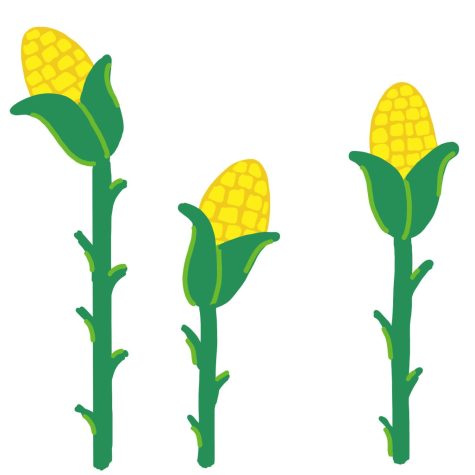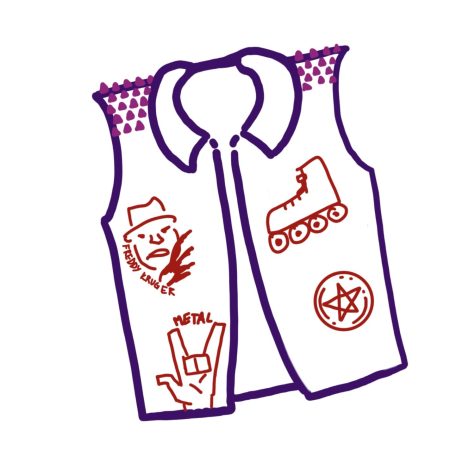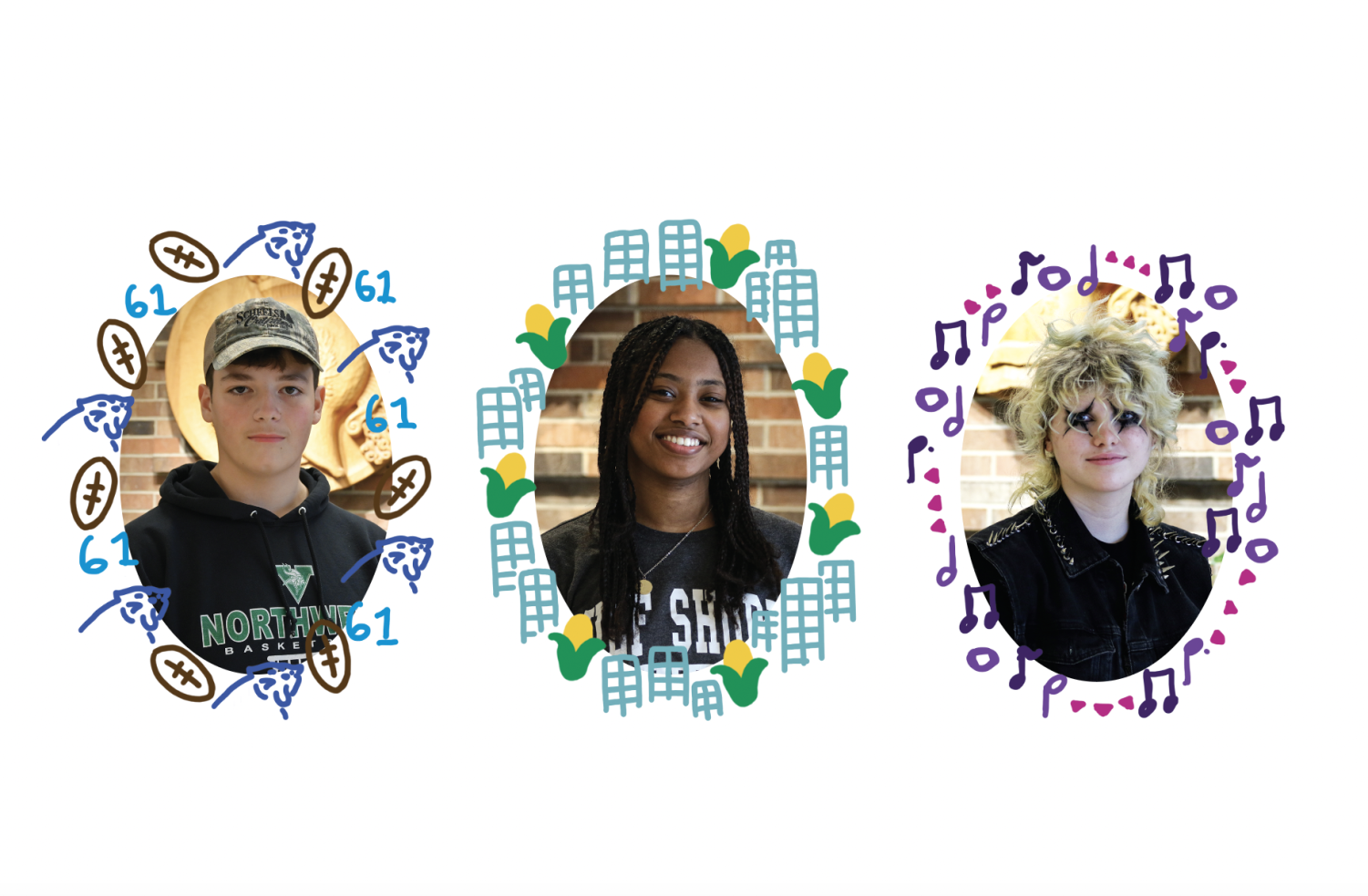Your donation will support the student journalists of West High School. Your contribution will allow us to purchase Scholarship Yearbooks, newsroom equipment and cover our annual website hosting costs.
Everyone has a story
The world is a big, blank book, waiting to be written in. We all add little stories and footnotes as we walk through life — here are a few that WSS collected.
January 27, 2022
More than a name
Serafim Surguladze: a name that stands out.
Seh·ruh·fim Sur·goo·lad·zay
Names can often reveal a lot about a person, including their heritage, familial connections and history. Freshman Serafim Surguladze’s name holds a specific cultural meaning.
“My name is kind of confusing,” Surguladze said. “Some people just look at it and say ‘Really? What? Where’s that from?’”

Surguladze’s name “Serafim” can be traced back to his place of birth: Moscow, Russia. He was named after the Russian saint, Seraphim of Sarov. Although Surguladze’s name has Russian origins, he comes from a multicultural home, with his dad being Georgian and his mom being Ukrainian.
At the age of 2, Surguladze moved from Russia to Iowa. He continues to speak Russian at home while living in America.
Surguladze’s name is not the only thing that defines him; one major part of his life is playing football. For some, football is just a sport — people running around, tackling each other. For Surguladze, it has been a source of growth and learning.
He first connected with the sport when he watched the Carolina Panthers play against the Denver Broncos at a friend’s house.
“Ever since I watched [that game], I just always wanted to be a football player.”
As he watches each game, he remembers what the sport is all about.
“I love seeing [the Panthers] play,” Surguladze said. “Sometimes they lose, but everyone loses in life.”
Now, he plays for the junior varsity football team at West and hopes to continue playing in the future.
“I want to keep playing, trying to get better and better every single day.”
Melting pot
Moving is never easy, especially when it is from a different country. Learning the customs and culture of a new place can prove to be a challenge, but one can often learn a lot about themselves through the process. For Layan Ahmed ’25, this was the case.
Ahmed moved to Iowa from Saudi Arabia when she was 6 years old.
“It was a really long process,” Ahmed said, “but I think it was definitely rewarding.”

Iowa was a completely different world from what Ahmed had experienced in Saudi Arabia. While her city was tall buildings and urban landscapes, Iowa was small towns and cornfields. Ahmed mainly learned about the differences between the two countries while in school.
“I think Islam was very ingrained into the culture [in Saudi Arabia] … You have to wear a uniform and be modest in what you wear and cover [your] hair, even when you’re young,” Ahmed said. “It was a little unusual for me seeing that people were wearing clothes different from the culture that I came from.”
During her time in Iowa, Ahmed has faced challenges as a Muslim student. She has often been put in uncomfortable situations when the topic of food comes up.
“In elementary school, there’d be a lot of celebrations with food,” Ahmed said. “A lot of the food had pork gelatin, so I was put in this awkward position where I couldn’t really participate with my classmates.”
Wearing modest clothes is also a fundamental part of Ahmed’s culture. As a volleyball player, she has noticed that the clothes do not follow these cultural values.
“I feel like I wear mostly modest clothing, and being in volleyball, that’s not really possible,” Ahmed said. “I felt like it was kind of hard navigating what I wanted to wear, what I couldn’t wear and what I could.”
Throughout her journey living in America, Ahmed has learned and reflected upon her beliefs and how her two cultures intertwine.

“My religion, my ethnicity and my culture are definitely a big part of my identity,” Ahmed said. “I’ve learned that it’s okay to mix both parts of your home life and your school life. I’ve also learned to respect both cultures and kind of take parts from each to form my identity.”
Metal music magic
To some, metal music is just screaming, loud noises with no real meaning, but to Lucy Abbas ’25 (he/she/they) it is part of who they are.
Abbas defines themself as an avid metalhead. At school, they walk down the hallway: funky turquoise hair, combat boots, battle vest and all. They first found their love for music when listening to the band Rage Against the Machine on their dad’s CD.

“That was my favorite music, and then I got older, grew out of it, then it was Taylor Swift all the way,” Abbas said. “Then in fourth grade, I started listening to that music again. It started with Twenty One Pilots, My Chemical Romance. And then over the years, it’s just gotten heavier and heavier.”
The stigma around metal music is something Abbas has noted over the years. Some may not be impressed by the genre, but Abbas values the technicality of the skill required to perform it. For example, Abbas admires the metal scream — a loud sound, similar to a growl — that can be done in one long cry or many short bursts. They can sometimes even take up entire melodies.
“People think that metal screaming doesn’t take talent, but in reality, it could damage your vocal cords and make it so you never talk again,” Abbas said. “All the musicians take over 10 years just to learn how to scream.”
The music that surrounds Abbas also impacts how she dresses. She would describe her style as punk, which is usually DIY. One example of this style of clothing is the Battle Vest, which is extremely popular in metalhead and punk cultures. Battle Vests are usually sleeveless denim or leather jackets, they consist of many unwritten rules; typically, the patches you put on them should be homemade.
“I took the sleeves off [the jacket] and hand spiked all of it. All the patches are going to be handmade. I’ll take a shirt, cut out some fabric [and] paint it with acrylic paint.”
Creating outfits every morning is one thing Abbas looks forward to every day.
“The best thing is picking out my outfit. As someone who has an extreme style, something I do collect is clothes and shirts and stuff. It’s one of my things,” Abbas said. “I get to look at my closet and choose what I want to wear, and then I get to do my whole makeup look corresponding [to] it.”
While Abbas feels many at West may define his style as unconventional, Abbas believes that being himself is an essential value in his life.
“After getting beaten down so many times, I remain to be who I am and decide how to live my own life.”


